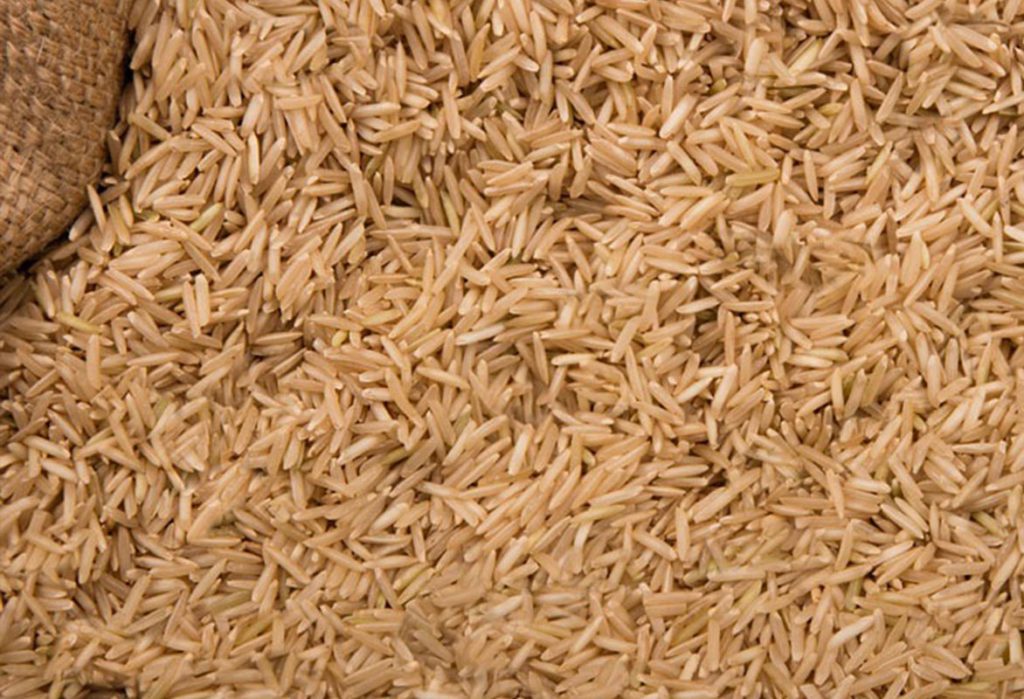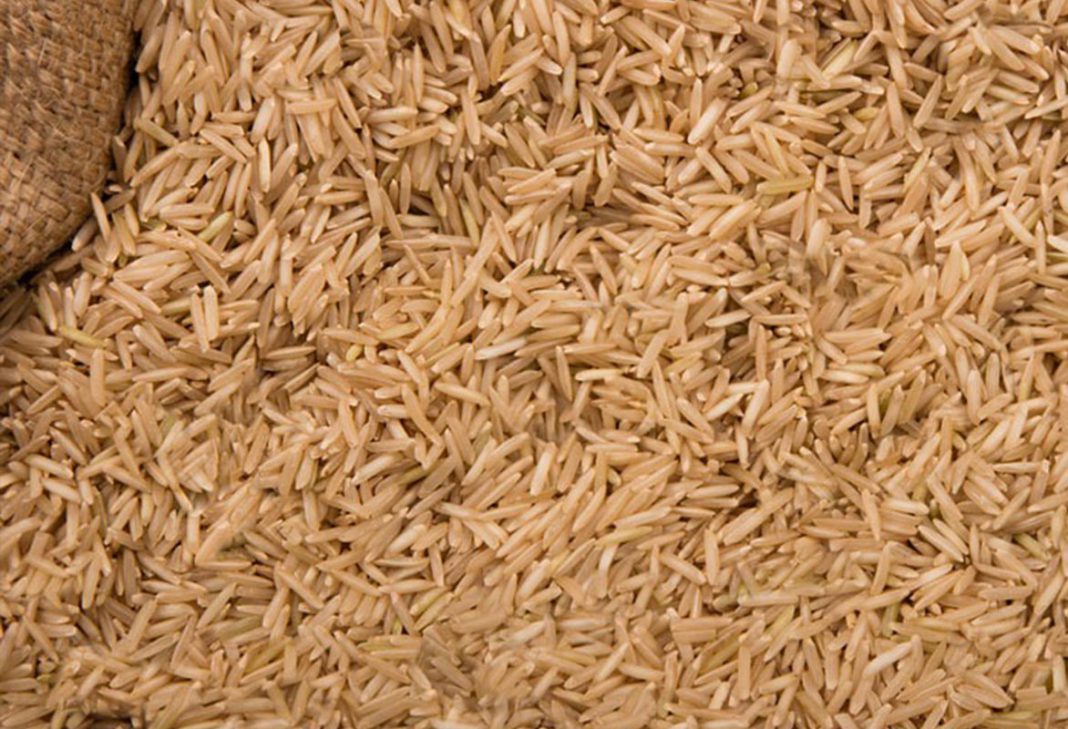Rice is a staple food for a large portion of the world’s population. It is an unavoidable food in over 100 food cultures. There are currently approximately 40,000 rice varieties cultivated. A dinner in Indian cuisine is not complete without rice. Furthermore, there is basmati, black rice, white rice, brown rice, and a plethora of other rice varieties. They differ in nutrient content, cost, processing, and health advantages.
Traditionally, the only rice type available was husked. However, as technology advanced, de-husked rice evolved and became popular alongside white rice. As a result, brown rice became restricted to rural areas. Brown rice, on the other hand, has recently returned to the spotlight as a result of increased knowledge of its health benefits. Brown rice is loaded with nutrients. We will discuss the nutrients and health advantages of brown rice in this section.

What exactly is brown rice?
Brown rice is a nutty-flavored rice variety that has been dehusked and unpolished. As a result, it is a healthier alternative to conventional rice. The hull, bran, and germ of rice are lost or removed during processing. In the case of brown rice, just the exterior layer of the rice kernel known as the hull is removed, leaving the bran and germ intact. Furthermore, the bran and germ are high in nutrients and fiber. As a result, brown rice keeps all of its nutrients and is therefore healthful.
Brown Rice Types:
There are numerous varieties of brown rice on the market. The amount of pigmentation (anthocyanins) in rice differs between cultivars. The tint of the bran determines the color, aroma, and flavor of the rice. When cooked, brown rice typically has a nutty flavor and a chewy texture. At room temperature, brown rice has a shelf life of six to nine months.
Examine the various types of brown rice available.
- Red rice bran: It has a high concentration of anthocyanins, which gives it a red/maroon color. Anthocyanin is an antioxidant and a pigment that gives fruits and vegetables their red-purple color. The flavor of red rice is murky.
- Black rice: The bran of black rice is black. The characteristic anthocyanin, when combined with the outer bran, produces a deep purple colour when cooked. The nutrient value of brown rice variations remains relatively constant.

Brown Rice’s Nutritious Properties:
Brown rice, on the other hand, is more healthy. As a result, it is a healthy superfood. It’s low in calories, fat, and gluten. This also contains antioxidants and other essential nutrients. As a result, it is a popular choice among health-conscious individuals. It also contains a variety of critical nutrients.
Brown rice includes the following nutrients in 100 g:
88 Kcal in terms of calories
Carbohydrates: 18.4 g
Fat: 0.7 g Fibre: 0.8 g
Protein content: 1.9 g

Brown Rice Health Benefits:
Brown rice’s health advantages are primarily due to how it is prepared. According to Harvard research, brown rice is a three-part whole grain. The bran is the exterior and fiber-filled coat, the germ is the nutrient-rich inner core, and the endosperm is the middle layer.
Let’s look at the health benefits of brown rice.
1. Antioxidant-rich
According to research, brown rice has potent antioxidants that protect your body from oxidative stress. It is the root cause of many health problems, including cancer, diabetes, heart disease, accelerated aging, inflammation, and so on.
Antioxidants also inhibit free radicals from causing cell damage, which helps to keep the aforementioned disorders at bay.
2. Properties for Weight Loss
Brown rice’s nutritional fibers keep you fuller for longer. Furthermore, polyphenols, which work as potent antioxidants, are abundant in brown rice. As a result, dietary fiber keeps you from overeating and bingeing on harmful snacks. It may also aid in weight loss by reducing calories and breaking down fat.
According to research, eating brown rice may help you lose weight and avoid obesity. This is because it improves bowel movement and feces, resulting in a healthy intestinal environment. As a result, it aids in the prevention of obesity and the maintenance of good health.
Brown rice contains about 4 g of fiber every 158 g serving. According to scientific evidence, eating fiber keeps you fuller for longer. As a result, integrating fiber-rich foods into your healthy weight-loss journey may be a better choice.
3. Brown Rice Is Beneficial for Diabetes
To naturally control blood sugar, eat a diet low in carbohydrates and lipids. Brown rice is a good low-carbohydrate alternative. Because of its low glycemic index, it aids with blood sugar management. A low glycemic index indicates that the food you eat digests slowly and does not cause blood sugar spikes.
Three cups of brown rice per day can help prevent type 2 diabetes, according to research. Furthermore, phytic acid, fiber, and important polyphenols promote controlled sugar release, which is beneficial to diabetics.
4. It regulates cholesterol levels.
Lowering cholesterol is one of the many advantages of brown rice. Several studies have found that dietary fibers are important in decreasing cholesterol levels.
Brown rice is high in fiber and hence helps lower cholesterol. Furthermore, brown rice contains essential amino acids that aid in the maintenance of healthy blood cholesterol levels.
5. It protects nerve cells.
Brown rice helps to reduce the risk of neurological diseases such as Parkinson’s and Alzheimer’s. The high fiber content lowers cholesterol levels, lowering the risk of neurological disorders.
Furthermore, antioxidants protect cells from free radical damage. As a result, it protects against inflammatory and degenerative diseases.
6. Gluten-free by nature
Gluten, a protein, is found in grains such as barley, wheat, and rye. However, many people nowadays avoid eating gluten-containing foods.
Gluten allergy or intolerance affects some people. It can cause symptoms ranging from mild to severe, such as abdominal pain, diarrhea, nausea, and vomiting. Brown rice is gluten-free and is an excellent alternative for gluten-intolerant people. A gluten-free diet is also good for autoimmune illnesses. Brown rice can also be used to make healthful foods that fit within a gluten-free diet.
7. Promotes Bone Health
According to a study, a manganese deficit can cause demineralization and decreased bone development. Brown rice is high in calcium, magnesium, and manganese. As a result, it promotes overall bone health, repairs bone injuries, and regulates muscle activities. Furthermore, it is essential in the prevention of arthritis and osteoporosis.
8. Whole Foods High in Fibre
Whole foods are recommended by the American Heart Association (AHA) to prevent:
High-risk cholesterol: The natural oil in brown rice raises HDL (good cholesterol) levels while the fiber content binds to LDL and eliminates it.
Blood pressure that is too high
Diabetes mellitus type 2
Cardiovascular Diseases
Obesity after a stroke







